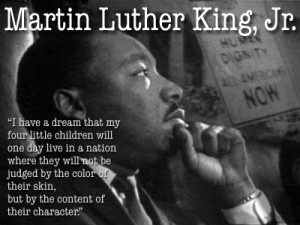African American Civil Rights Movement
The African-American Civil Rights Movement or 1960s Civil Rights Movement encompasses social movements in the United States whose goals were to end racial discrimination and segregation against black americans and to secure legal recognition and federal protection of the citizenship rights enumerated in the Constitution and federal law. This article covers the phase of the movement between 1954 and 1968, particularly in the South. The leadership was African-American, much of the political and financial support came from labor unions (led by Walter Reuther), major religious denominations, and prominent white politicians such as Hubert Humphery and Lyndon B.Johnson.
The movement was characterized by major campaigns of civil resistance. Between 1955 and 1968, acts of nonviolent protest and civil disobedience produced crisis situations and productive dialogues between activists and government authorities. Federal, state, and local governments, businesses, and communities often had to respond immediately to these situations that highlighted the inequities faced by African Americans. Forms of protest and/or civil disobedience included boycotts such as the successful Montgomery Bus Boycott (1955–56) in Alabama; “sit-ins” such as the influential Greensboro sit-ins (1960) in North Carolina;marches, such as the Selma to Montgomery marches(1965) in Alabama; and a wide range of other nonviolent activities.
Noted legislative achievements during this phase of the civil rights movement were passage of the Civil Rights Act of 1964,that banned discrimination based on “race, color, religion, or national origin” in employment practices and public accommodations; the Voting Rights ACt of 1965, that restored and protected voting rights; the Immigration and Nationality Services Act of 1965, that dramatically opened entry to the U.S. to immigrants other than traditional Northern European and Germanic groups; and the Fair Housing Act of 1968, that banned discrimination in the sale or rental of housing. African Americans re-entered politics in the South, and across the country young people were inspired to take action.
A wave of inner city riots in black communities from 1964 through 1970 undercut support from the white community. The emergence of the Black Power movement, which lasted from about 1966 to 1975, challenged the established black leadership for its cooperative attitude and its nonviolence, and instead demanded political and economic self-sufficiency.
